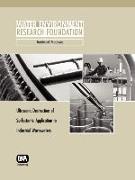- Start
- Ultrasonic Destruction of Surfactants
Ultrasonic Destruction of Surfactants
Angebote / Angebote:
This research focused on the use of sonication to destroy surfactants and surface tension properties in industrial wastewaters that affect traditional water treatment processes. We have investigated the sonochemical destruction of surfactants and a chelating agent to understand the release of metals from surfactants during sonication. In addition, the effects of physical properties of surfactants and the effect of ultrasonic frequency were investigated to gain an understanding of the factors affecting degradation. Successful partial or total destruction of surfactants resulting in the release of metals bound to surfactants may result in a significant cost savings of treatment plants. Sonochemical degradation of surfactants was observed to be more effective than nonsurfactant compounds. In addition, as the concentration is increased the degradation rate constant does not decrease as significantly as with nonsurfactant compounds in the NAP reactor. In fact, the total number of molecules degraded increases with concentration. The degradation of metal complexes is not as effective as in the absence of the metal. However, this is likely an artifact of the model complexing agent used at the hot bubble interface, significantly increasing ligand exchange kinetics and thus degradation of the complex. This publication can also be purchased and downloaded via Pay Per View on Water Intelligence Online - click on the Pay Per View icon below
Folgt in ca. 15 Arbeitstagen
